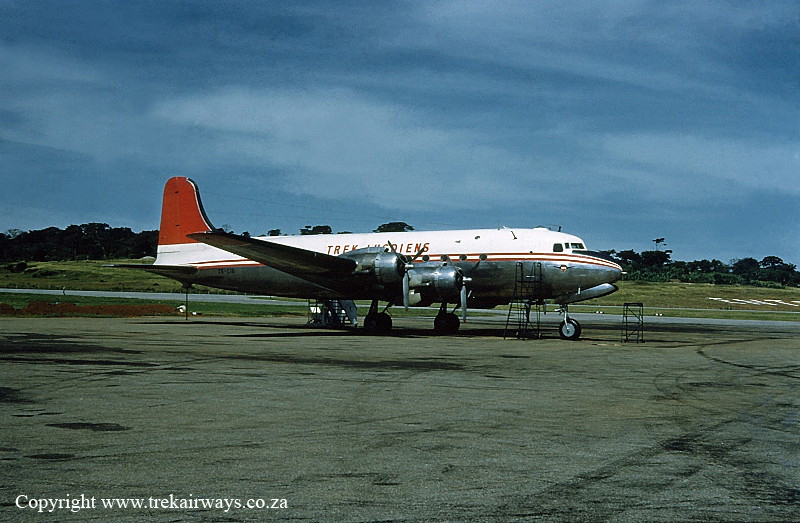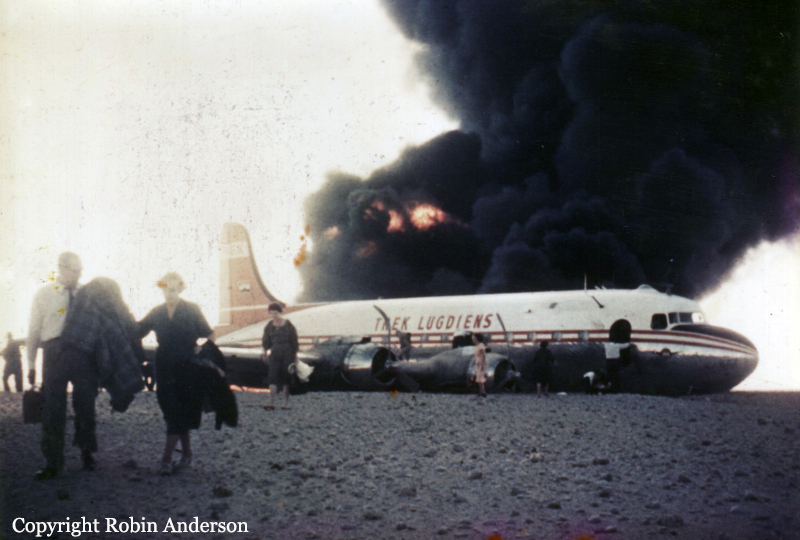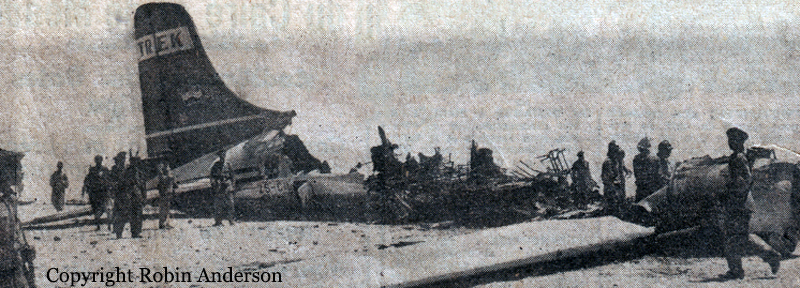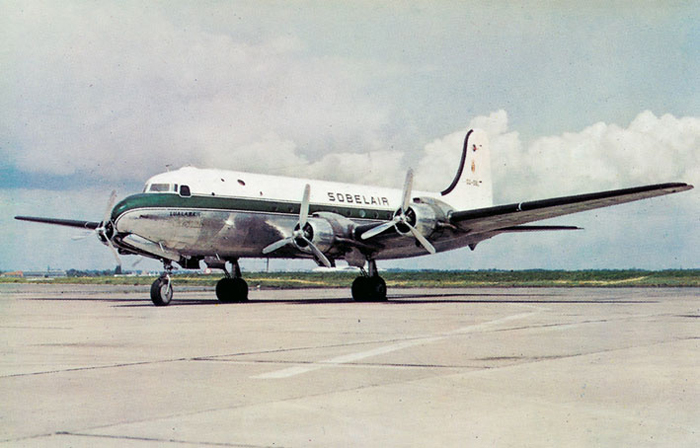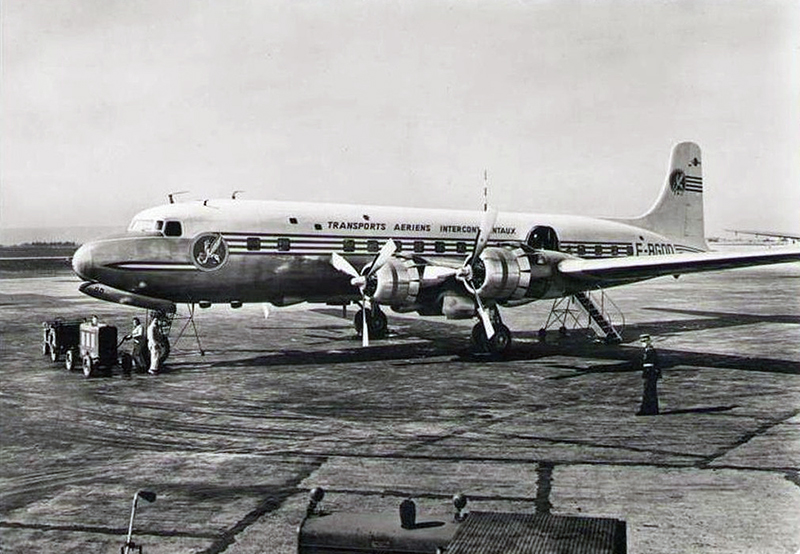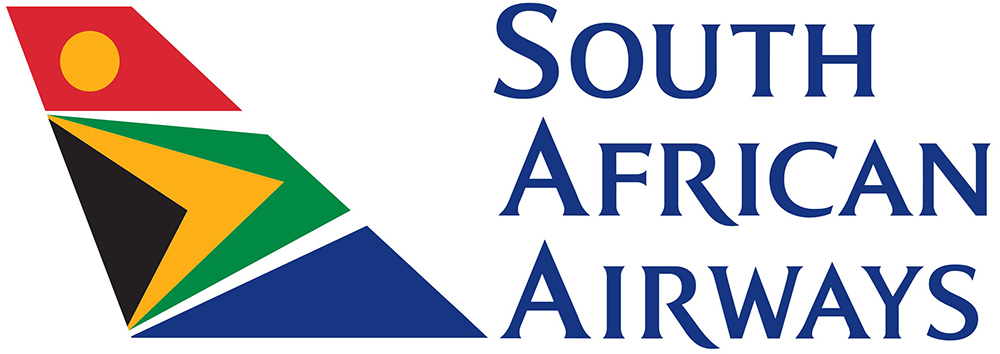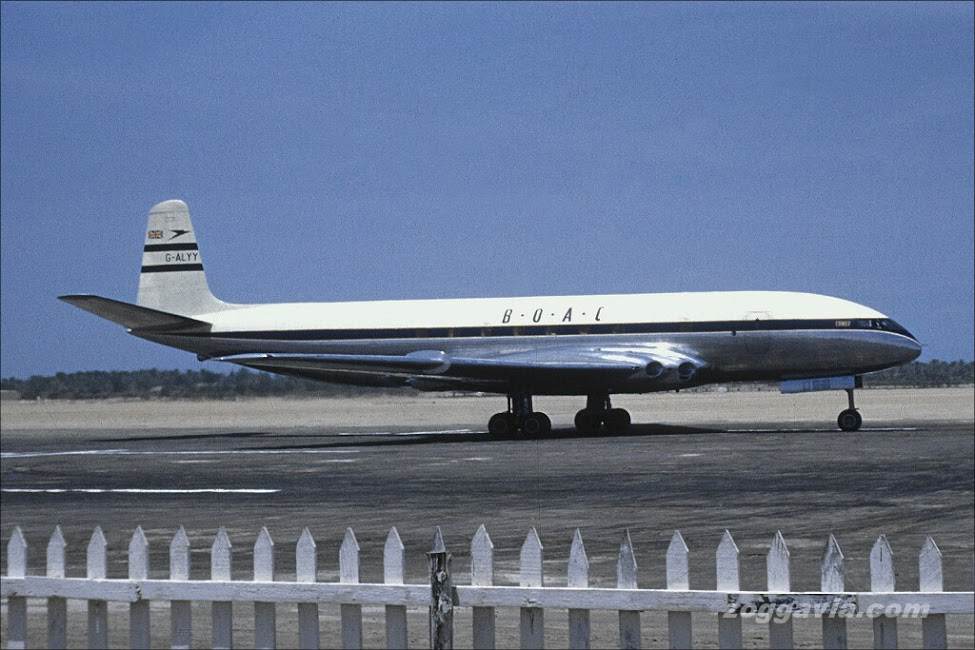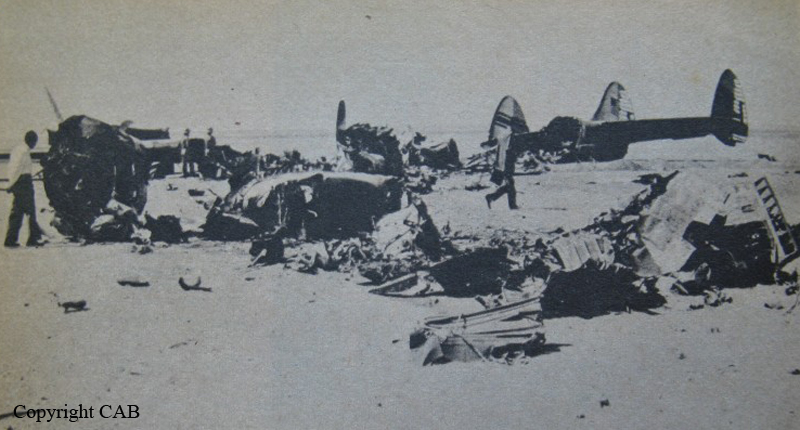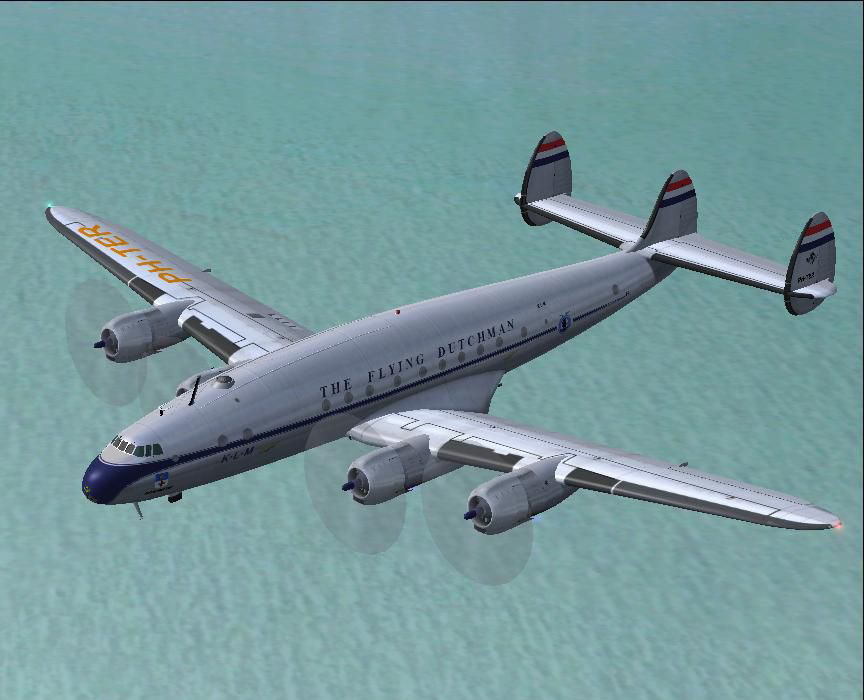Crash of a Douglas DC-4-1009 in El Badary
Date & Time:
Sep 3, 1960 at 0854 LT
Registration:
ZS-CIG
Survivors:
Yes
Schedule:
Luxembourg – Cairo – Entebbe – Johannesburg
MSN:
42913
YOM:
1946
Flight number:
TRK033
Crew on board:
6
Crew fatalities:
Pax on board:
61
Pax fatalities:
Other fatalities:
Total fatalities:
0
Circumstances:
On the leg from Cairo to Entebbe, while cruising at an altitude of 9,500 feet, the engine number two caught fire. The crew feathered the propeller and elected to extinguish the fire but without success. As the fire could not be contained, the captain decided to reduce his altitude and to attempt an emergency landing. The airplane belly landed in a sandy area located near El Badary, about 30 km south of Asyut and came to rest in flames. All 67 occupants evacuated safely while the aircraft was totally destroyed by fire.
Probable cause:
A heavy fuel leak from a sheared or cracked fuel pressure pipe, which was ignited by sparks from the generator.
